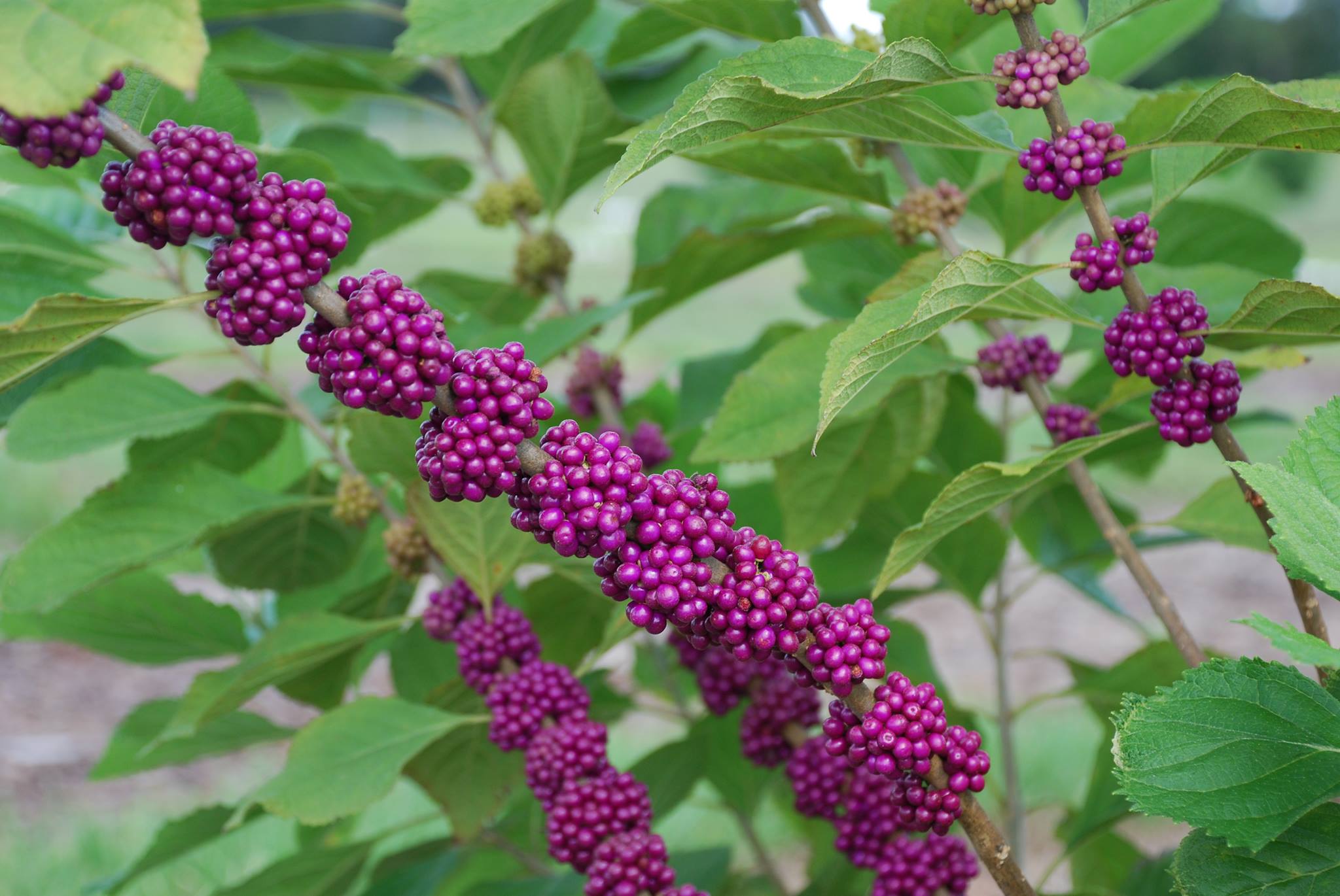
Holiday decorations can be made from many different kinds of greenery and berries. Instead of buying fake plastic decorations, consider growing your own. You won’t find fresher greenery at a better price than the trees, bushes and vines outside your back door! Plant them in your yard for your enjoyment and to feed wildlife. If you choose to remove the plant’s limbs and stems, you are pruning the plants. The goal is to trim the plant in a manner that helps it keep its natural form so give careful consideration to what you cut and what you leave. Choose native plants that supply food for native wildlife and avoid exotic invasive plants. To get the correct identification of plants with berries, use scientific names. Common names such as “Christmas berry” are used to name several different plants. Here are some profiles plants you may see while looking for Christmas decorations.
Holly

Hollies (Ilex sp.) are the largest group of plants with showy red berries ripening now. There are several native species and cultivars including Yaupon holly (upright and weeping forms), American holly, and Dahoon holly that thrive in Central Florida. Holly plants have many different leaf shapes and vary in size. All produce the shiny green leaves and red berries we associate with “Christmas holly.” The berries last from fall into late winter and provide a good source of food for native birds.If you want to buy one for your yard, shop in the winter to be sure you’re getting a berry-producing female plant. In the landscape, use the Weeping holly (Ilex vomitoria ‘Pendula’) as a specimen plant. It has a natural funky shape and an extreme weeping habit with long branches of beautiful red berries. The ‘Eagleston’ holly (Ilex x attenuata ‘Eagleston’) is another popular landscaping choice. It makes an excellent privacy hedge and needs very little maintenance.
Wild coffee

Wild coffee (Psychotria nervosa) is a Florida native shrub with beautiful small red berries and glossy green foliage. You can find wild coffee growing in shady forested areas in Central and South Florida, but it is cold sensitive. It’s readily available for purchase at native plant nurseries and a great Florida-Friendly Landscaping plant to add to your yard. Wild coffee belongs to the Rubiaceae family and is related to the coffee we drink; however, wild coffee berries do not contain caffeine. The fruit provides food for many species of birds and the flowers provide a nectar source for butterflies. Consider adding this to your landscape in shaded areas.
Beautyberry

Beautyberry (Callicarpa americana) is named after the beautiful purple berries that grow in clusters along long stems. This is another prized native shrub used in Florida-Friendly Landscapes that is well adapted to our Central Florida climate. In the fall, the showy purple berries provide food for wildlife and can be used in your holiday floral arrangements. This shrub is popular with birds and best used in a naturalized landscape integrated with other native plants. Learn more about Beautyberry.

Brazillian pepper
Brazilian pepper (Schinus brasilienses) is a prolific plant with green foliage and red berries. It’s one of the many plants referred to by the common name of “Christmas berry.” However, it is not a plant you want to use in your holiday decorations. It is a non-native plant considered a noxious weed on the exotic invasive list. Additionally, it’s in the poison ivy family and can cause irritations to the skin. There are statewide efforts to attempt to manage and eradicate this plant. It is not recommended for the landscape because the berries are eaten by birds and seeds are spread to natural areas, where they grow and take over habitat for native species to grow. Consider removing these invasive plants from your yard. Learn more about Brazilian pepper.

Coral ardesia
Coral ardesia is a hardy evergreen from Southeast Asia with dark green leaves and shiny red berries. It is also known by the common names of coral berry and Christmas berry. In 1896, it entered the commercial nursery market and by 1980 it had escaped from cultivation and invaded natural areas. Coral ardesia is listed as a noxious weed and it is illegal to propagate or transport this plant without a permit. Learn more about Coral ardesia.
 0
0
